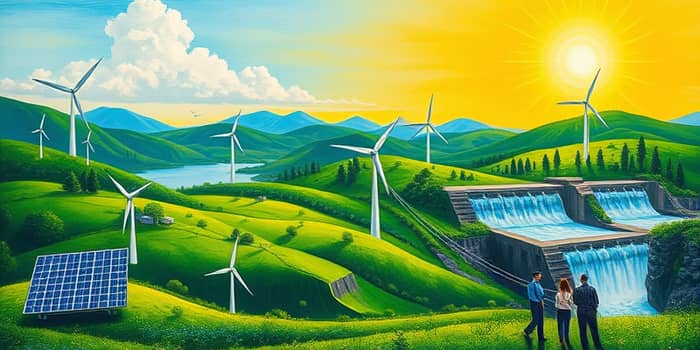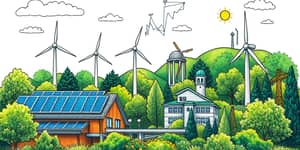
In 2025, the global energy sector stands at a crossroads, with unprecedented capital flows marking a decisive shift toward cleaner power. Investors, communities, and policymakers are united by a shared vision: to harness the power of sun, wind, and water to secure a sustainable tomorrow.
This article explores how strategic investments in renewable projects can drive innovation, resilience, and prosperity across regions. By understanding the current landscape, technological breakthroughs, and emerging opportunities, stakeholders can play a pivotal role in shaping a cleaner future.
This year, global energy investment is projected to reach $3.3 trillion, with a historic tilt toward clean energy. Of that amount, $2.2 trillion is slated for renewables, grid upgrades, battery storage, efficiency improvements, and other low-emissions technologies. Fossil fuel spending, by contrast, falls to $1.1 trillion—its first decline since the pandemic.
These figures underscore a historic record high for renewables—driven by policy support, technological maturity, and shifting investor sentiment worldwide.
Central to this transition are international commitments like the Paris Agreement, energy security concerns, and robust recovery policies post-pandemic. Rising geopolitical tensions amplify the urgency to diversify supply sources and insulate economies from volatility.
Moreover, burgeoning demand from data centers, AI applications, and electric mobility has catalyzed fresh capital allocations. China leads the charge, pouring unprecedented sums into solar PV, grid enhancement, and EV infrastructure to secure its energy future.
Advances in core technologies and digital integration are expanding the scope and reliability of renewables. From more efficient cells to predictive grid management, innovation is the backbone of rapid deployment.
Next-generation breakthroughs, including green hydrogen production, advanced thermal storage, and AI-driven energy management, promise to unlock further potential, ensuring variable resources can meet baseload and peak demands alike.
Investing in renewables is not only an environmental imperative but a major economic engine. By channeling funds into clean projects, stakeholders can tap into:
These benefits contribute to social development, improved public health, and a more resilient energy system that can adapt to shifting demands and unforeseen disruptions.
Despite the momentum, significant hurdles remain. Aging grid infrastructure and lengthy approval processes can stall new projects, while high capital costs in developing regions slow deployment.
Addressing these barriers requires coordinated policy frameworks, innovative financial instruments, and capacity-building initiatives to ensure no region is left behind.
China remains the world’s largest clean energy investor, leveraging state-backed financing to deploy gigawatts of solar and wind capacity annually. Europe follows with robust carbon pricing mechanisms and green recovery funds, while the United States accelerates through federal incentives and private partnerships.
In contrast, many developing nations face elevated project risks and financing costs, hindering their renewable transitions. Innovative models—such as blended public-private funds and risk guarantees—are emerging to bridge these gaps and catalyze local growth.
Current trends suggest that by mid-century, over 50% of global electricity generation will come from renewables, dominated by solar and wind. Solar alone could account for nearly half of all generation, thanks to falling costs and scalable deployment models.
Regions outside the major markets of China, Europe, and the US are poised for rapid expansion, with compound annual growth rates between 6.7% and 12%. These shifts reflect rising energy demand, decarbonization targets, and the growing affordability of clean technologies.
Investors and policymakers alike face a critical juncture: to amplify momentum or risk falling behind. By mobilizing capital, fostering innovation, and streamlining regulations, we can accelerate the deployment of renewable energy and secure a cleaner, safer, and more prosperous future.
Now is the time to commit to sustainable growth through smart clean energy investments. Together, we can build resilient power systems, bolster economies, and safeguard the planet for generations to come.
References













